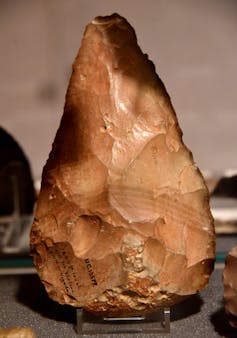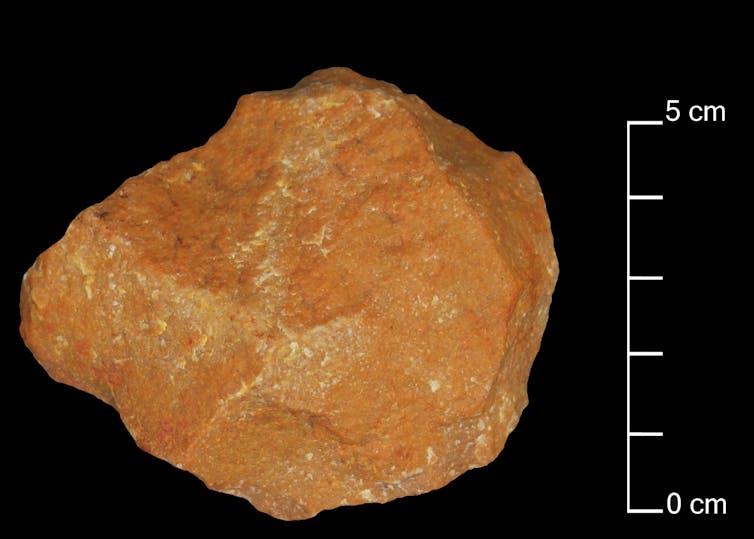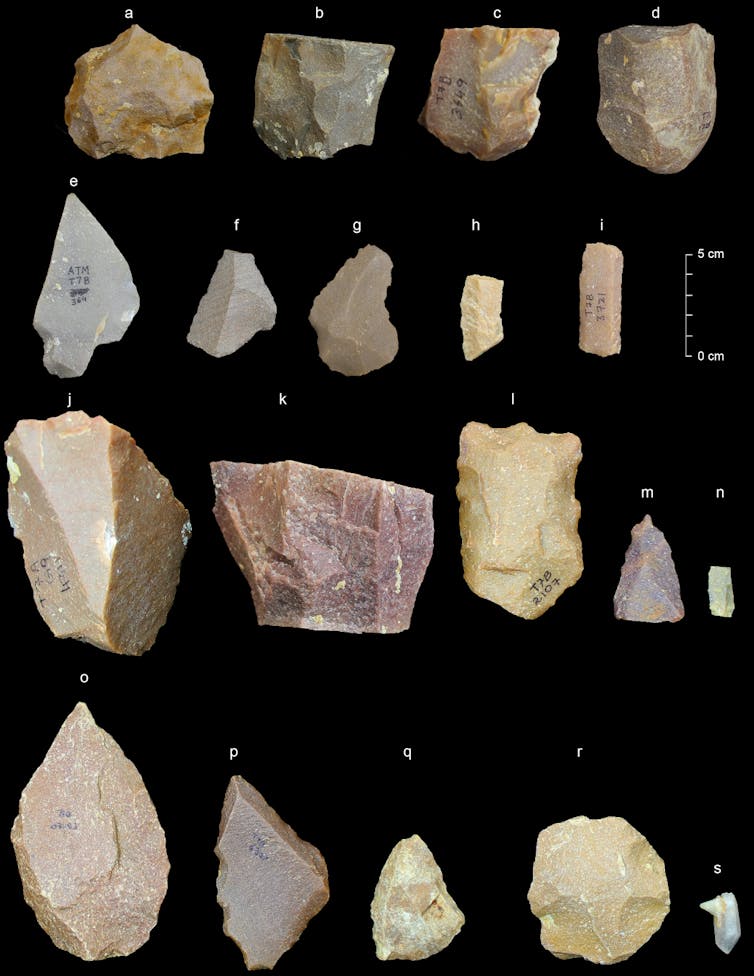Indian stone tools could dramatically push back date when modern humans first left Africa
Reader/Associate Professor in Biological and Forensic Anthropology, University of Central Lancashire
We are all children of Africa. As members of the hominin species Homo sapiens, you and I are the product of millions of years of shared evolutionary history of life on Earth. But as a species we are relatively recent, emerging between 400,000 and 300,000 years ago in East Africa from indigenous archaic populations.
Currently, some of the biggest questions facing palaeoanthropology involve trying to work out how and when early humans left the continent. Was it a single dispersal? Or multiple? A recent discovery of a jawbone fossil in Israel suggests that there could have been a migration as early as about 180,000 years ago. But a new study, published in the journal Nature, suggests early humans may have left Africa much earlier than that.
The new research reports the discovery of tools from the Middle Palaeolithic (200,000 to 40,000 years ago) in Tamil Nadu, India. Surprisingly, the tools date back to 385,000 years ago – which is around the same time as this technology is thought to have first developed by archaic or possibly modern humans in Africa. This challenges the view, backed by most researchers, that modern humans brought these technologies to India less than 140,000 years ago.
Attirampakkam site
Attirampakkam is located on the banks of a stream of the Kortallaiyar River in northeast Tamil Nadu. Excavations by a team of Indian researchers revealed abundant layers of stone tools trapped within sediments deposited by streams which ran through the area in prehistory. The site appears to have been sporadically occupied by apes and early hominins predating Homo sapiens from as far back as 1.7m years ago.

Using a dating technique called infrared-stimulated luminescence – which pinpoints the last time that sediment grains were exposed to light – the authors determined that the silts and gravels which contain the tools date to between 385,000 and 172,000 years ago. These tools chart the transition from the Acheulean handaxe culture, created by archaic humans of the Lower Palaeolithic, to smaller tools. The latter were produced by a more sophisticated technique called Levallois – involving the production of stone points and blades.
The tools push the date back for the origins of Middle Palaeolithic technology in India. Previous studies have suggested that this occurred between 140,000 years and 46,000 years ago, possibly as Homo sapiensmigrated into the subcontinent.

But what is perhaps more important, is what these dates mean for the emergence of Homo sapiens and our species’ migrations into the rest of the Old World. And to understand those implications we need to consider fossils from North Africa and how they are associated with hominin species and technology.
Modern humans
African Middle Stone Age technologies, which first emerged around 400,000 years ago, have been documented as developing out of Earlier Stone Age cultures at sites such as Kapthurin (Kenya), Kathu Pan (South Africa), and the Cave of Hearths at Makapansgat (South Africa). The latter site, in particular, mirrors the transition from Acheulean to Levallois technologies seen at Attirampakkam quite nicely, but is associated with archaic rather than modern human fossils.

Recent work at the cave site of Jebel Irhoud in Morocco, has discovered fossils of Homo sapiens and Middle Stone Age tools together – dating to about 315,000 years ago. The research suggests that the emergence of our own species was a pan-African evolutionary process, and one implicitly associated with the development of indigenous Middle Stone Age technologies.
Implications for human migration
The new findings could mean that archaic humans in India developed such technology all on their own, which some researchers have previously suggested. However, it could also mean that modern humans left Africa much earlier than recent archaeological and palaeontological evidence on Africa’s doorstep suggests. In fact, they could have left Africa shortly after evolving, making it as far as the east coast of India in perhaps a few tens of thousands of years.
Further work at Attirampakkam may allow us to test these competing models, but we have to bear in mind that the association between technology and biology is not simple. Unfortunately, I do think we need to find a smoking gun – in this case, a hominin fossil – to find out for sure .
Elsewhere in this time frame, the cave site of Rising Star in South Africa has provided strong evidence of the primitive hominin Homo nalediengaging in ritual mortuary practices and deliberate disposal of their dead. Such archaeological behaviours have traditionally been associated with more advanced hominins and modern Homo sapiens.
In the archaeological record, sometimes biology and culture do not line up. The best way to resolve this? Dig! Archaeologists and palaeoanthropologists need to get out into the blank spaces on the map and explore, excavate … and publish.
https://theconversation.com/indian-stone-tools-could-dramatically-push-back-date-when-modern-humans-first-left-africa-90867

0 Comments:
Post a Comment
Subscribe to Post Comments [Atom]
<< Home